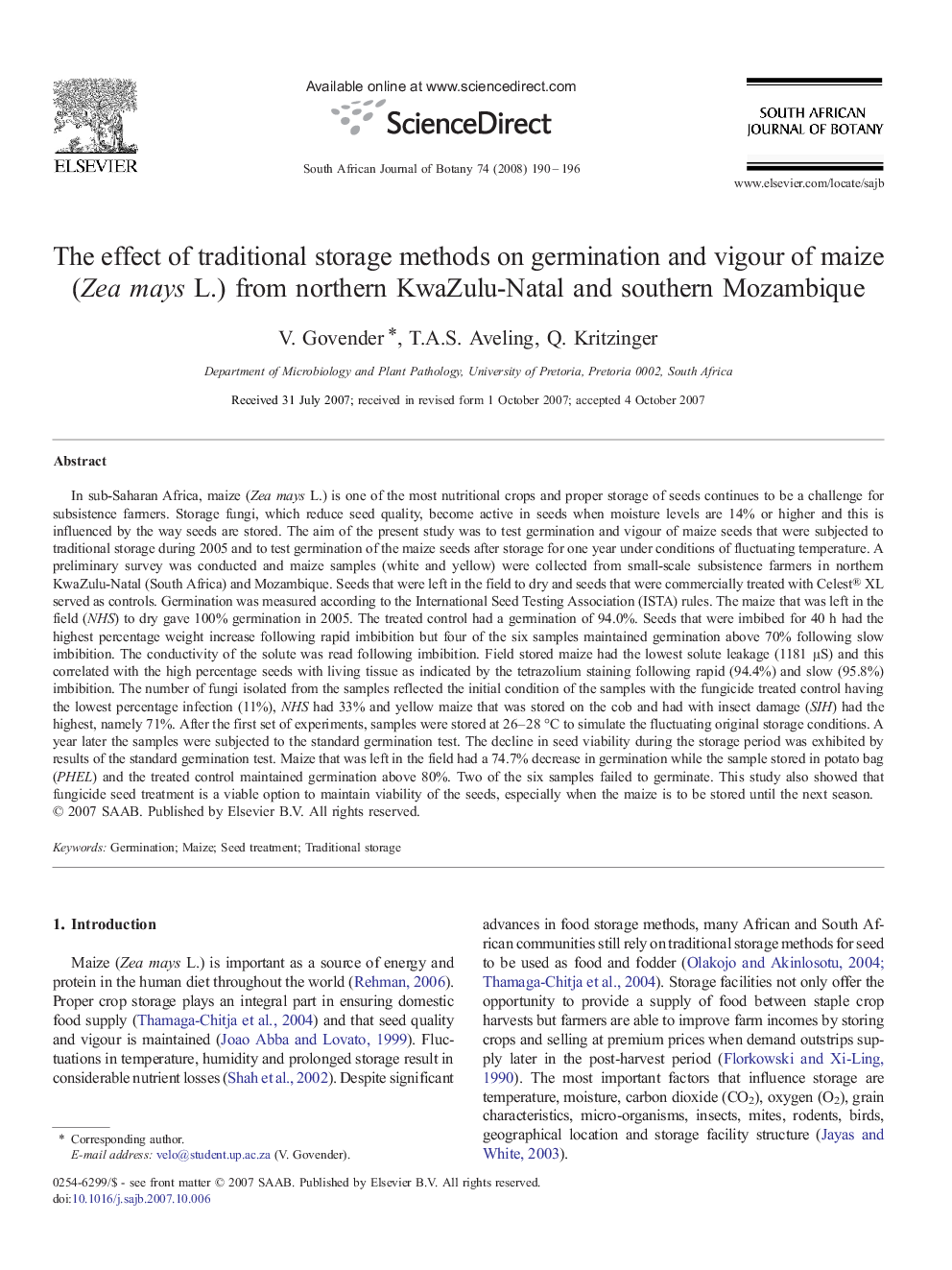| Article ID | Journal | Published Year | Pages | File Type |
|---|---|---|---|---|
| 4521655 | South African Journal of Botany | 2008 | 7 Pages |
In sub-Saharan Africa, maize (Zea mays L.) is one of the most nutritional crops and proper storage of seeds continues to be a challenge for subsistence farmers. Storage fungi, which reduce seed quality, become active in seeds when moisture levels are 14% or higher and this is influenced by the way seeds are stored. The aim of the present study was to test germination and vigour of maize seeds that were subjected to traditional storage during 2005 and to test germination of the maize seeds after storage for one year under conditions of fluctuating temperature. A preliminary survey was conducted and maize samples (white and yellow) were collected from small-scale subsistence farmers in northern KwaZulu-Natal (South Africa) and Mozambique. Seeds that were left in the field to dry and seeds that were commercially treated with Celest® XL served as controls. Germination was measured according to the International Seed Testing Association (ISTA) rules. The maize that was left in the field (NHS) to dry gave 100% germination in 2005. The treated control had a germination of 94.0%. Seeds that were imbibed for 40 h had the highest percentage weight increase following rapid imbibition but four of the six samples maintained germination above 70% following slow imbibition. The conductivity of the solute was read following imbibition. Field stored maize had the lowest solute leakage (1181 μS) and this correlated with the high percentage seeds with living tissue as indicated by the tetrazolium staining following rapid (94.4%) and slow (95.8%) imbibition. The number of fungi isolated from the samples reflected the initial condition of the samples with the fungicide treated control having the lowest percentage infection (11%), NHS had 33% and yellow maize that was stored on the cob and had with insect damage (SIH) had the highest, namely 71%. After the first set of experiments, samples were stored at 26–28 °C to simulate the fluctuating original storage conditions. A year later the samples were subjected to the standard germination test. The decline in seed viability during the storage period was exhibited by results of the standard germination test. Maize that was left in the field had a 74.7% decrease in germination while the sample stored in potato bag (PHEL) and the treated control maintained germination above 80%. Two of the six samples failed to germinate. This study also showed that fungicide seed treatment is a viable option to maintain viability of the seeds, especially when the maize is to be stored until the next season.
